29 November 2023
Published on 2023-11-29
You can now search for all products with a duplicate title from directly with in the app. When used with the 'Date Created' filter this will help manage duplicate products on your store.
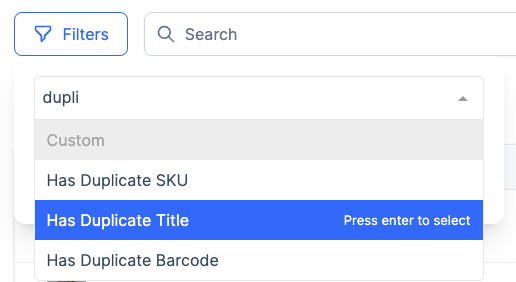
Learn more about searching for Shopify products with duplicate titles.
29 November 2023
Published on 2023-11-29
Code snippets allow you to write code in Liquid to set different product fields. We've released several updates to the Code snippets to improve their usability:
- The
parse_jsonfilter is more generous when converting a string to a JSON object. It will accept things like trailing commas in lists that aren't part of the official JSON specification - Number and boolean metafields are now rendered as number and boolean objects instead of strings. For example, a number metafield will now render as
123instead of"123" - We fixed a bug where in some cases you could not read product metafields after setting one
Learn more about Code snippets.
15 November 2023
Published on 2023-11-15
You can now use the Bulk Product Editor to edit metaobject references on your products and variants. You can do so through either an:: in-app edits or with a spreadsheet.

Learn more about bulk editing metaobjects in Shopify.
13 November 2023
Published on 2023-11-13
For the last three years we have implemented a feature freeze during the Black Friday/Cyber Monday season. The primary goal is to maintain the stability of our app.
We've found that, after a certain point, most of the bugs we encounter stem from recent changes or additions to the app. By refraining from making any changes or introducing new features for a brief period, we can minimize the chances of disruptions and ensure smooth operation throughout the holiday season.
Our feature freeze will be in effect from the end of November 15th to November 29th, lasting for two weeks. During this period, we won't be releasing new features. However, please rest assured that we will address any critical problems or issues promptly to minimize disruptions to your business operations.
10 November 2023
Published on 2023-11-10
We've optimized the spreadsheet editing process in our app to make your edits faster and more efficient.
Now, when uploading a spreadsheet, you have the option to skip unchanged rows, allowing for quicker edits, especially when dealing with numerous products where only a handful differ. Simply utilize the "skip unchanged rows" option in the advanced settings during the upload.
For a detailed guide, check out our knowledge base article on skipping unchanged rows.
10 November 2023
Published on 2023-11-10
We've streamlined the process of deleting metafields in our app for a more consistent and user-friendly experience. Now, you can delete metafields in two straightforward ways: either through an in-app edit by selecting "delete metafield," or by formatting a spreadsheet with "delete" in the cell.
For additional details and guidance, check out our knowledge base article on bulk deleting metafields in Shopify.
10 November 2023
Published on 2023-11-10
We've upgraded your editing experience by introducing more descriptive titles for edits. Instead of generic labels like "edit SKU" or "edit title," you'll now see specifics such as "decrease price by 20%."
This improvement makes it easier to locate and identify your previous edits, streamlining your workflow.
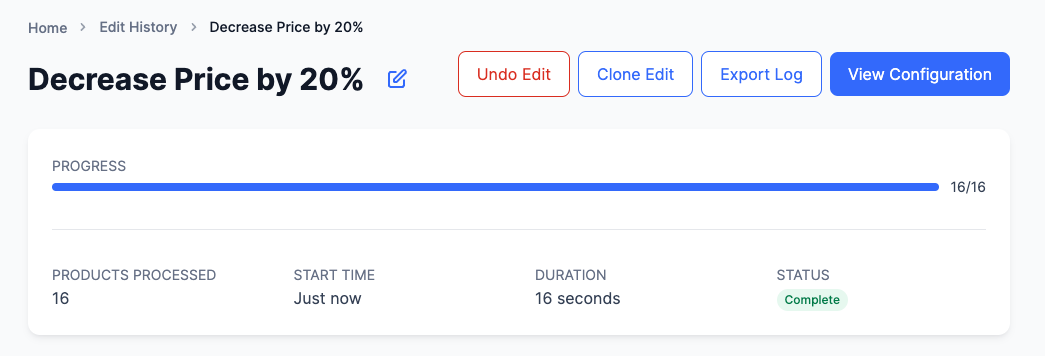
2 November 2023
Published on 2023-11-02
Now, you can effortlessly connect inventory to different locations in Shopify automatically.
With this update, you can use product rules to automatically connect and disconnect inventory to specific locations. This means that as soon as a product is added to your Shopify store, it will be associated with the correct inventory locations, saving you time and ensuring your inventory is always in sync.
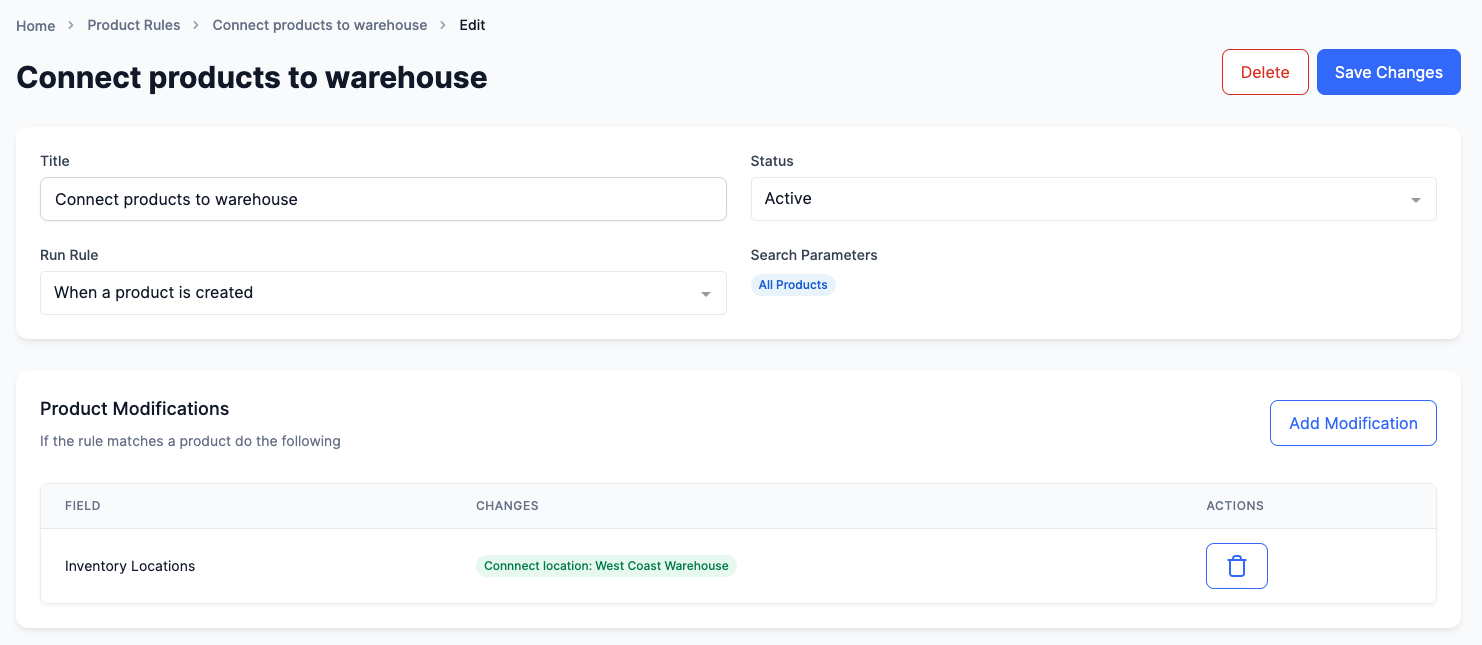
2 November 2023
Published on 2023-11-02
With code snippets, you can craft custom logic in the Liquid template language to modify and monitor your product data.
In this update, we've introduced two new filters to simplify the process of adding or removing items from lists, making it especially convenient when handling meta fields with lists of strings.
Learn more about these new filters and how to make the most of Liquid code snippets
1 November 2023
Published on 2023-11-01
Now, when you use the search function within the Bulk Product Editor, you have the option to enter a product or variant ID directly.
This means that if you have a product ID in a spreadsheet or any other source, you can effortlessly navigate to that specific product by hitting Ctrl or Command + K, pasting the ID, and pressing Enter. You'll be swiftly directed to the product or variant associated with the ID you provided.
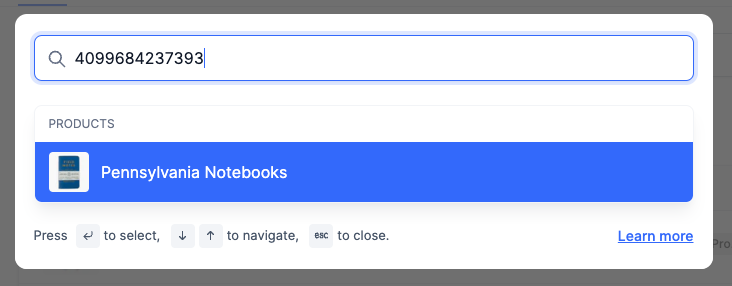
23 October 2023
Published on 2023-10-23
We've made some important changes to how the app handles SKUs.
As technology evolves, we increasingly encounter a multitude of characters beyond the traditional ASCII set, including Unicode characters and special characters. These characters may look similar to standard ones but can cause issues when used in SKUs.
Our update addresses this by improving how we handle and search for Unicode and special characters within SKUs. This ensures that you can find products by SKU, even if they include these non-standard characters.
19 October 2023
Published on 2023-10-19
You can now write your own logic to update your products with code snippets. Code snippets are written in the Liquid language (also used by Shopify themes) and give you a powerful tool to keep your product data in sync.
Using a few lines of code and the assign operator, you can set your product data according to your business requirements.
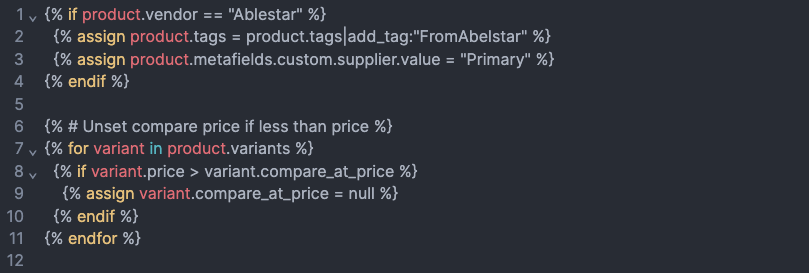
You can then apply to the code snippet to your products using an in-app edit. For more automation, you can combine the code snippet with product rules, so that the code snippet to applied to product whenever they are created and/or updated.
You can use this to do things like automatically set your Google Shopping fields, make sure products are in the right collections, or have the right tags.
Learn more about using Liquid code snippets.
11 October 2023
Published on 2023-10-11
In the Export History, you can now effortlessly manage all your product exports, including those you've scheduled to repeat at regular intervals.
We've added a brand new "Status" tab, which allows you to see at a glance if you have any paused exports. You can also change the status to paused/active by clicking on the status badge.

11 October 2023
Published on 2023-10-11
In an effort to streamline our app, we'll be removing the 'AI Description Help' feature. You can now accomplish this task directly within the Shopify admin.
For instructions on how to do this, check this article: https://www.shopify.com/blog/ai-product-descriptions
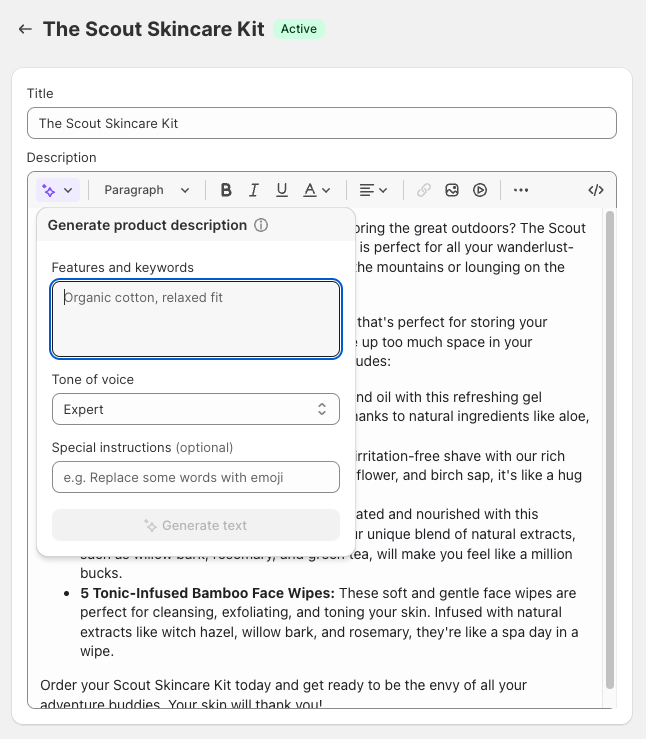
25 September 2023
Published on 2023-09-25
Product rules allow you to enforce rules on your products like ‘all products with a price of zero should be unpublished’.
Now you can choose to run rules either only when a product is created or both when it's created and updated. This flexibility aids in scenarios like one-time price edits or initial tag settings. Adjust your settings as needed in the app.
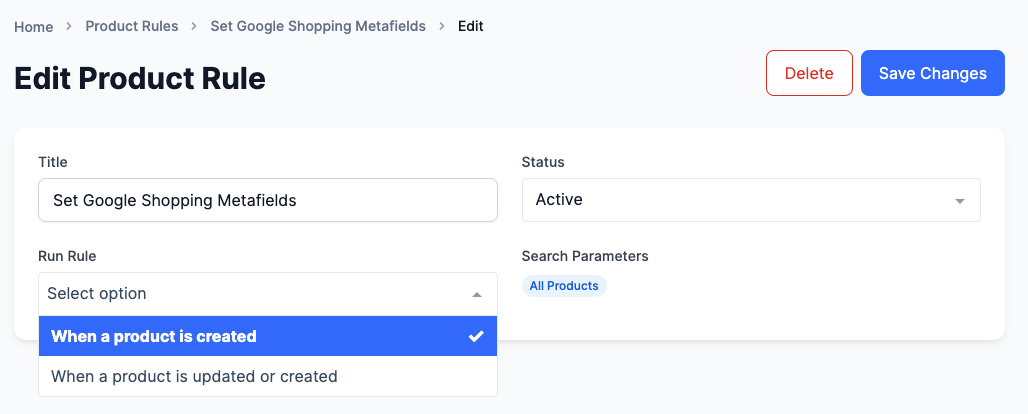
22 September 2023
Published on 2023-09-22
We've added new rounding options to the Bulk Product Editor:
- Round decimals: This option rounds the decimal portion of the product's price to a specified value
- Round whole number: This option rounds the price to the nearest whole number
- Round whole number up: This option rounds the price up to the nearest specified value
You can learn more about rounding prices in bulk in Shopfy on our Knowledge Base.
6 September 2023
Published on 2023-09-06
You can now change the capitalization of your Dynamic Fields. Choose from uppercase, lowercase, or titlecase to better match the needs of your content. This is particularly useful when importing products with varying text formats from third-party suppliers.
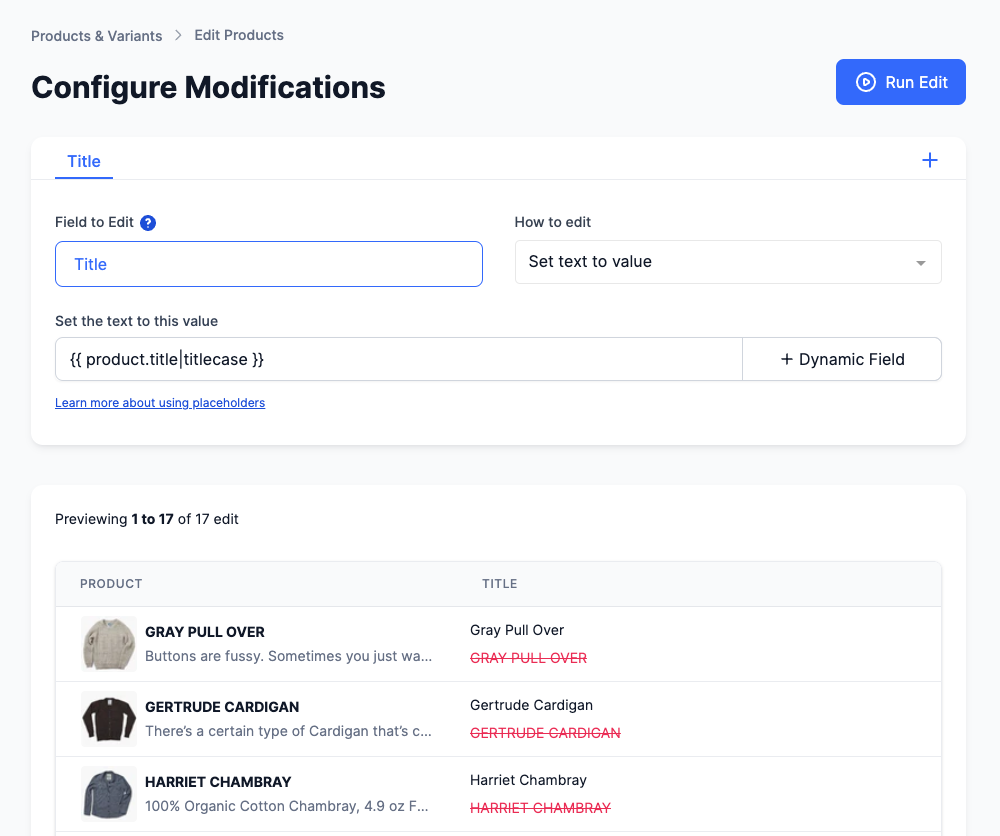
6 September 2023
Published on 2023-09-06
When you bulk edit a text field you have the option to include values like the product's vendor or title. Previously these were called 'Placeholders' but we've renamed them to 'Dynamic Fields' to make them more clear to users.
30 August 2023
Published on 2023-08-30
Previously, you saw two separate menu items on the left-hand side: "Product Rules" and "Reccurring Edits." Now, you'll find both options nested under the "Automations" menu.
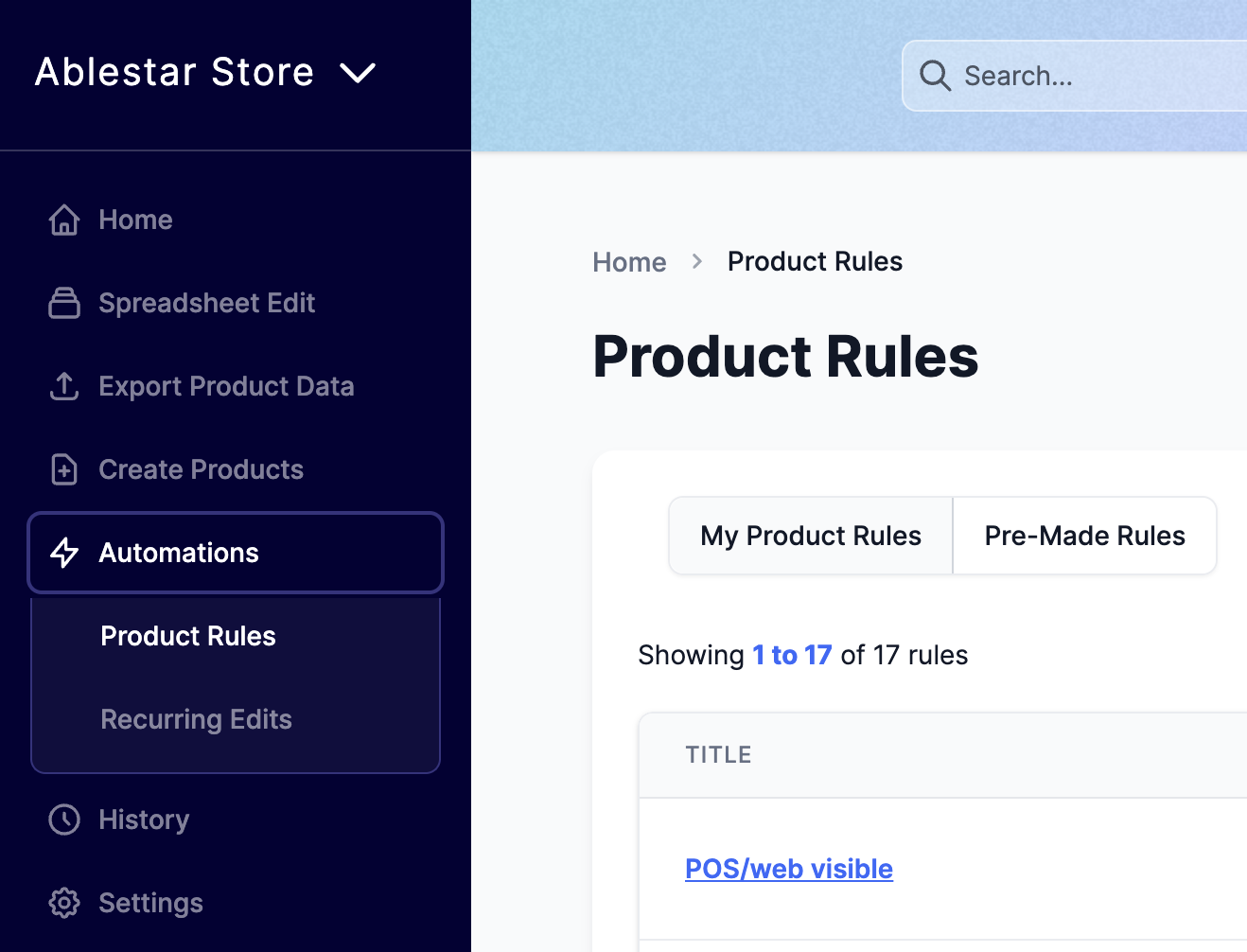
23 August 2023
Published on 2023-08-23
The Bulk Product Editor now offers a feature to convert tags with a shared prefix into a metafield list.
In the editing interface, you can now select the desired field, such as "Size List" for example, and then choose the "Set from Prefix Tags" option. You would then specify the prefix for the tags you want to convert, like "size:". After running the operation, tags with the specified prefix will be aggregated into a new metafield list on the product page.
Example: If a product has tags like size:XL, size:M, and size:L, these can be converted into a "Size List" metafield containing a list of those sizes.

Learn more about converting prefixed tags to a metafield list


